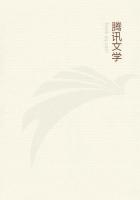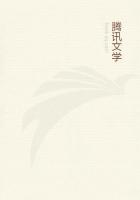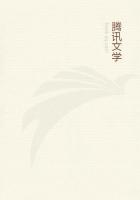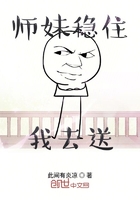There is a third species of this animal, preeminently clever and artistic. It first weaves a thread stretching to all the exterior ends of the future web; then from the centre, which it hits upon with great accuracy, it stretches the warp; on the warp it puts what corresponds to the woof, and then weaves the whole together. It sleeps and stores its food away from the centre, but it is at the centre that it keeps watch for its prey. Then, when any creature touches the web and the centre is set in motion, it first ties and wraps the creature round with threads until it renders it helpless, then lifts it and carries it off, and, if it happens to be hungry, sucks out the life-juices--for that is the way it feeds; but, if it be not hungry, it first mends any damage done and then hastens again to its quest of prey. If something comes meanwhile into the net, the spider at first makes for the centre, and then goes back to its entangled prey as from a fixed starting point. If any one injures a portion of the web, it recommences weaving at sunrise or at sunset, because it is chiefly at these periods that creatures are caught in the web. It is the female that does the weaving and the hunting, but the male takes a share of the booty captured.
Of the skilful spiders, weaving a substantial web, there are two kinds, the larger and the smaller. The one has long legs and keeps watch while swinging downwards from the web: from its large size it cannot easily conceal itself, and so it keeps underneath, so that its prey may not be frightened off, but may strike upon the web's upper surface; the less awkwardly formed one lies in wait on the top, using a little hole for a lurking-place. Spiders can spin webs from the time of their birth, not from their interior as a superfluity or excretion, as Democritus avers, but off their body as a kind of tree-bark, like the creatures that shoot out with their hair, as for instance the porcupine. The creature can attack animals larger than itself, and enwrap them with its threads: in other words, it will attack a small lizard, run round and draw threads about its mouth until it closes the mouth up; then it comes up and bites it.
40
So much for the spider. Of insects, there is a genus that has no one name that comprehends all the species, though all the species are akin to one another in form; it consists of all the insects that construct a honeycomb: to wit, the bee, and all the insects that resemble it in form.
There are nine varieties, of which six are gregarious-the bee, the king-bee, the drone bee, the annual wasp, and, furthermore, the anthrene (or hornet), and the tenthredo (or ground-wasp); three are solitary-the smaller siren, of a dun colour, the larger siren, black and speckled, and the third, the largest of all, that is called the humble-bee. Now ants never go a-hunting, but gather up what is ready to hand; the spider makes nothing, and lays up no store, but simply goes a-hunting for its food; while the bee--for we shall by and by treat of the nine varieties--does not go a-hunting, but constructs its food out of gathered material and stores it away, for honey is the bee's food. This fact is shown by the beekeepers' attempt to remove the combs; for the bees, when they are fumigated, and are suffering great distress from the process, then devour the honey most ravenously, whereas at other times they are never observed to be so greedy, but apparently are thrifty and disposed to lay by for their future sustenance. They have also another food which is called bee-bread; this is scarcer than honey and has a sweet figlike taste;this they carry as they do the wax on their legs.
Very remarkable diversity is observed in their methods of working and their general habits. When the hive has been delivered to them clean and empty, they build their waxen cells, bringing in the juice of all kinds of flowers and the 'tears' or exuding sap of trees, such as willows and elms and such others as are particularly given to the exudation of gum. With this material they besmear the groundwork, to provide against attacks of other creatures; the bee-keepers call this stuff 'stop-wax'. They also with the same material narrow by side-building the entrances to the hive if they are too wide. They first build cells for themselves; then for the so-called kings and the drones; for themselves they are always building, for the kings only when the brood of young is numerous, and cells for the drones they build if a superabundance of honey should suggest their doing so. They build the royal cells next to their own, and they are of small bulk; the drones' cells they build near by, and these latter are less in bulk than the bee's cells.

